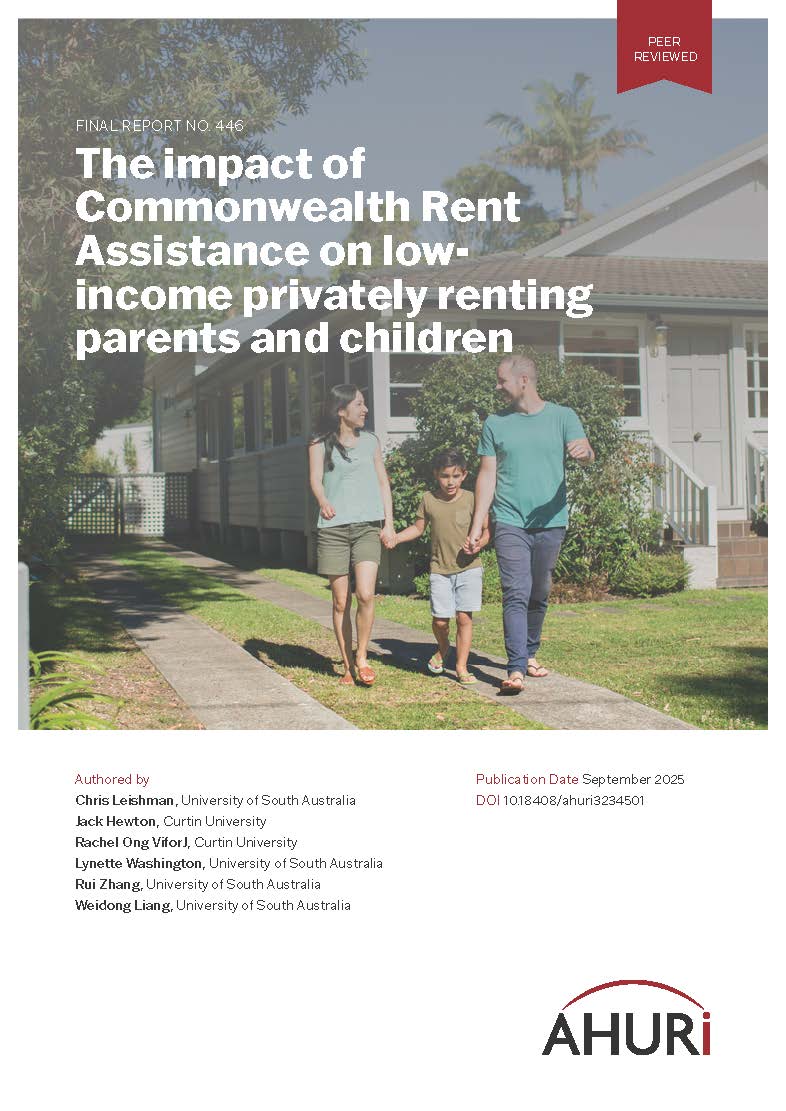
Rent assistance can give children in private rental hope for better futures
18 Sep 2025
Receiving CRA helps families with their immediate day to day struggles with unaffordable rents. But new AHURI research reveals that for families, CRA can have benefits for children long into the future. The more CRA a family receives, the greater the likelihood of their children studying at university. Receiving CRA also lowers the risk of children experiencing homelessness later in life.
The research, ‘The impact of Commonwealth Rent Assistance on low-income privately renting parents and children’, examines how CRA affects low-income families who rent privately. It focuses on the role of CRA in reducing disadvantage—related to poor housing, financial, wellbeing and health outcomes—passing from parents to their children.
To get CRA, a household must be low-income and eligible for a welfare payment. Families often sacrifice spending on food, energy bills, health and wellbeing in order to keep their rental homes.
Children are the key beneficiaries of CRA
‘Households that are eligible for CRA have more hardship and stress in their lives, which is of course one of the reasons that they qualify for CRA,’ says lead author of the research, Professor Chris Leishman from The University of South Australia.
‘CRA can help reduce intergenerational disadvantage experienced by these families. When looking at long term outcomes, we see the more CRA a family received when their children were young, the higher the likelihood of those children going on to study at university. Receiving CRA also lowers the risk of homelessness for these children later in life’.
Around 30% of CRA recipient households have dependent children. This totals around 3 million children.
‘Families that use CRA to pay higher rents improve the outcomes for their children,’ says Professor Leishman. ‘Being able to afford higher rents help families choose better neighbourhoods and larger homes to avoid overcrowding. These benefits only start after families receive a certain level of CRA. This was around $70 per week for the years (2007 and 2012) when the families we studied were living in CRA subsidised housing.’
Teaching families to use CRA strategically has huge benefits
The research reveals policies that support families with children understand the value of using CRA strategically are likely to improve outcomes. These policies can help families live in better neighbourhoods and in homes which are not overcrowded. These positive outcomes have the potential to break intergenerational patterns of housing stress, homelessness, poverty and low educational attainment, as well as negative health and wellbeing outcomes and reliance on social housing support.
This research provides strong evidence of CRA’s effectiveness as a welfare-enhancing program. It offers insights into ways that CRA might be redesigned to improve the wellbeing of children as well as adults. It also presents compelling evidence of how CRA can help reduce intergenerational transmission of disadvantage.
This work was undertaken for AHURI by researchers from The University of South Australia and Curtin University.

